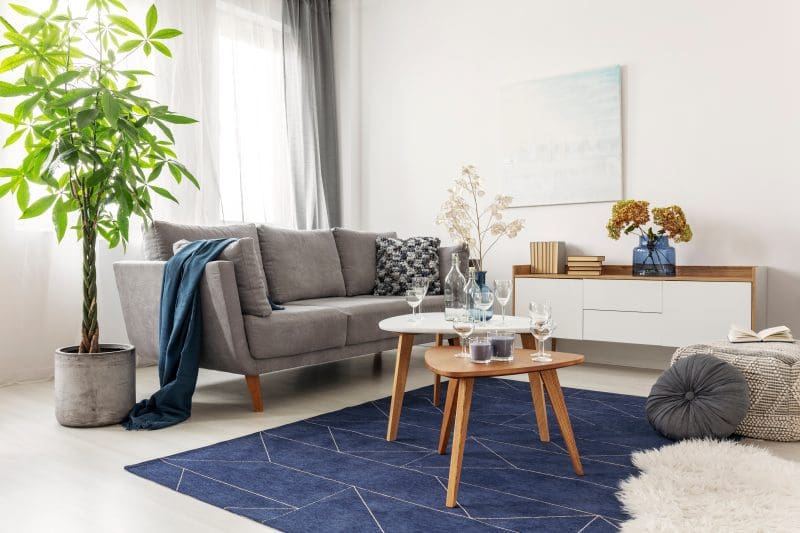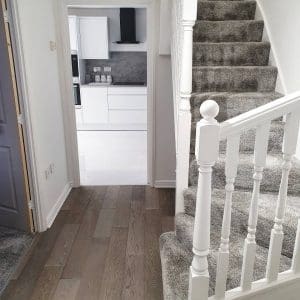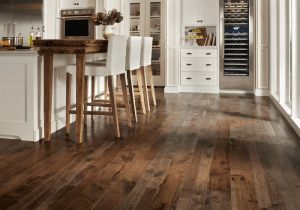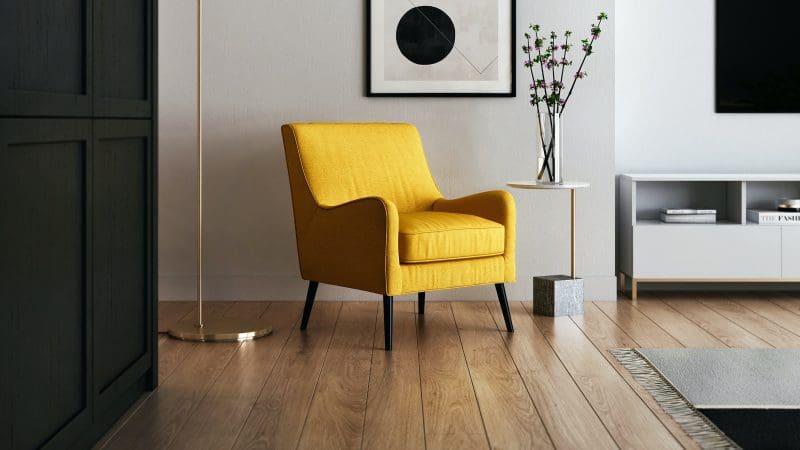
What are the three types of wood flooring?
First off, when you’re browsing for that perfect wooden touch, you’ll likely come across three main types: solid hardwood, engineered hardwood, and laminate wood flooring.
Solid Hardwood
Exactly what it says on the tin – planks of solid wood all the way through. It offers that authentic, timeless look and the option to sand and refinish multiple times over its lifespan.
Engineered Hardwood
Engineered hardwood flooring is a bit like a club sandwich. It’s made up of layers, with a slice of hardwood on top and then layers of less expensive plywood underneath. This structure makes it more stable and less prone to warping in moist conditions compared to solid hardwood.
Laminate Wood Flooring
Laminate is the clever mimic. It’s not made of solid wood but has a photographic applied layer on top that looks like wood (or anything else, for that matter) covered with a clear protective layer. It’s tough, versatile, and often easier on the wallet.

Is engineered hardwood better than hardwood?
Well, “better” is a bit of a slippery fish – it all depends on what you’re after. If you’re all about authenticity and longevity, and you’re decking out a space that stays dry, solid hardwood could be your winner. It offers a certain je ne sais quoi that’s hard to beat, and you can give it a facelift several times over.
Engineered hardwood, on the other hand, is a mighty contender if you’re looking for something a bit more adaptable. It’s less likely to throw a fit with changes in humidity, making it a safer bet for basements or kitchens. Plus, it’s a bit easier to install, especially if you’re after that do-it-yourself glory.

What is the cheapest type of hardwood flooring?
If your wallet’s feeling a bit light, but you’re set on that wood floor dream, laminate wood flooring often comes in as the most budget-friendly option. It gives you the wood look without the wood price, and it’s pretty durable to boot. However, if you’re set on having real wood, going for a softer, more abundant species like pine can be easier on your budget than, say, exotic hardwoods.

What thickness of hardwood flooring should I buy?
Thickness can make a difference, especially when you’re thinking about durability and the potential for refinishing. Solid hardwood typically ranges from 3/4″ to 5/16″. If you’re laying down floors in a high-traffic area and fancy the option to sand and refinish in the future, thicker is your friend.
For engineered hardwood, thickness can vary a lot, usually between 3/8″ and 1/2″. Remember, with engineered planks, it’s not just the total thickness that matters but also the thickness of the top veneer layer if you’re considering refinishing.
Whether you’re renovating on a shoestring or ready to splash out on the crème de la crème of timber floors, Frank’s has got your back. We’re here to make sure you don’t just buy flooring; you buy the right flooring at a price that’ll have you dancing across your new floor with joy. Pop into your local Frank’s – where quality meets affordability, without any faff.




